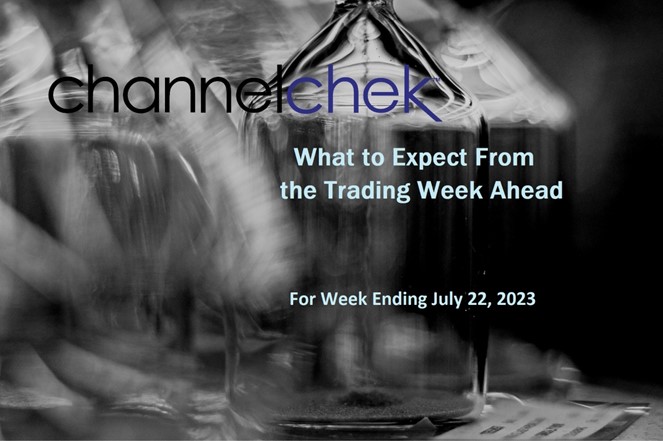
The Trading Week is Light on Data and Heavy On Quarterly Earnings Reports
After last week’s lower-than-expected CPI and PPI inflation readings, the markets are far less certain what the FOMC will decide at their policy meeting July 25-26. Clarity is not going to come from addresses by any Fed Presidents as they enter a blackout period where they are forbidden to speak on the subject between July 15 and July 27. One report that the markets will be focused on during the week involves unemployment, which, if up, may cause the markets to rally – remember we are still in a period where bad economic news causes a positive stock market reaction.
Investors looking for direction may find it in the earnings reports as major banks, metals producers, and closely followed tech companies will be releasing their quarterly earnings reports.
Monday 7/17
• 8:30 AM ET, The New York State Manufacturing Index is expected to drop to negative 7 for June after unexpectedly climbing 38 points to +6.6 in May 2023, from a four-month low of -31.8 in May.
Tuesday 7/18
• 8:30 AM ET, The consensus for Retail Sales for June is up 0.4% after unexpectedly rising 0.3% month-over-month in May, following a 0.4% increase in April, which beat forecasts of a 0.1% decline. It’s clear the ability to forecast has been economic numbers, especially consumer activity has been difficult.
• 8:55 AM ET, The Johnson Redbook Index is forecast to show a year-over-year, same week, increase of 1.1%, for the week ending July 15. This would follow a 1.6% increase the prior reading. The Redbook is a sample of large US general merchandise retailers representing about 9,000 stores. By dollar value, the Index represents over 80% of the equivalent ‘official’ retail sales series collected and published by the US Department of Commerce.
• 9:15 AM ET, Industrial Production is expected to have risen by 0.1% in June, after declining by 0.2% from a month earlier in May.
• 9:15 AM ET, Manufacturing Production is expected to be flat month over month for June after rising 0.1% in May.
• 9:15 AM ET, Capacity Utilization is expected to have remained in a non-inflationary low 79.5% rate during June. When industries are bumping up against capacity, costs will increase as operations become less efficient because less effective resources are called on to produce, thus increasing the cost of each unit of production.
• 10:00 AM ET, Federal Reserve Vice Chair for Supervision Michael S. Barr will be speaking on fair lending practices at the National Fair Housing Alliance National Conference. The Fed is in a blackout period this week, so it is expected that there will be no discussion of monetary policy.
Wednesday 7/19
• 8:30 AM ET, Building permits consensus forecast for June is for 1.505 million after May’s strong 1.486 million.
• 8:30 AM ET, Housing Starts month over month for May increased by 21.7%, the forecast is for a decline of 10.2% for June.
• 10:30 AM ET, The Energy Information Administration (EIA) provides weekly information on petroleum inventories in the US, whether produced here or abroad. The inventory level impacts prices for petroleum products.
Thursday 7/20
• 8:30 AM ET, Initial Jobless Claims are expected to have increased the week ended July 15 to 245,000 from 237,000 the prior week. Employment data ahead of the July 25-26 FOMC meeting, in the absence of any fresh inflation data until the 28th has the potential to move markets.
• 10:00 AM ET, Existing home sales in the US, which include completed transactions of single-family homes, townhomes, condominiums, and co-ops, is expected to decline by 1.2% month over month for June. This would follow a small increase of 0,2% the previous reading.
Friday 7/21
• No major economic releases scheduled.
What Else
The FOMC meeting is Tuesday and Wednesday during the last full week in July. The Fed can do one of three things, lower rates, raise rates, keep rates unchanged. Like all good multiple choice questions, one of these answers can be eliminated. On Thursday of last week (July 13), Federal Reserve Board Gov. Christopher Waller said he was not swayed by June’s benign consumer inflation data and said he wants the central bank to go ahead with two more 25-basis-point rate hikes this year. “I see two more 25-basis-point hikes in the target range over the four remaining meetings this year as necessary to keep inflation moving toward our target,” Waller said this in an address to The Money Marketeers on NYU, a bond market club with some of the most powerful fixed income professionals as members. If the Fed is data dependent and there is little new data since the last inflation readings, Waller’s position is not likely to change.
Managing Editor, Channelchek